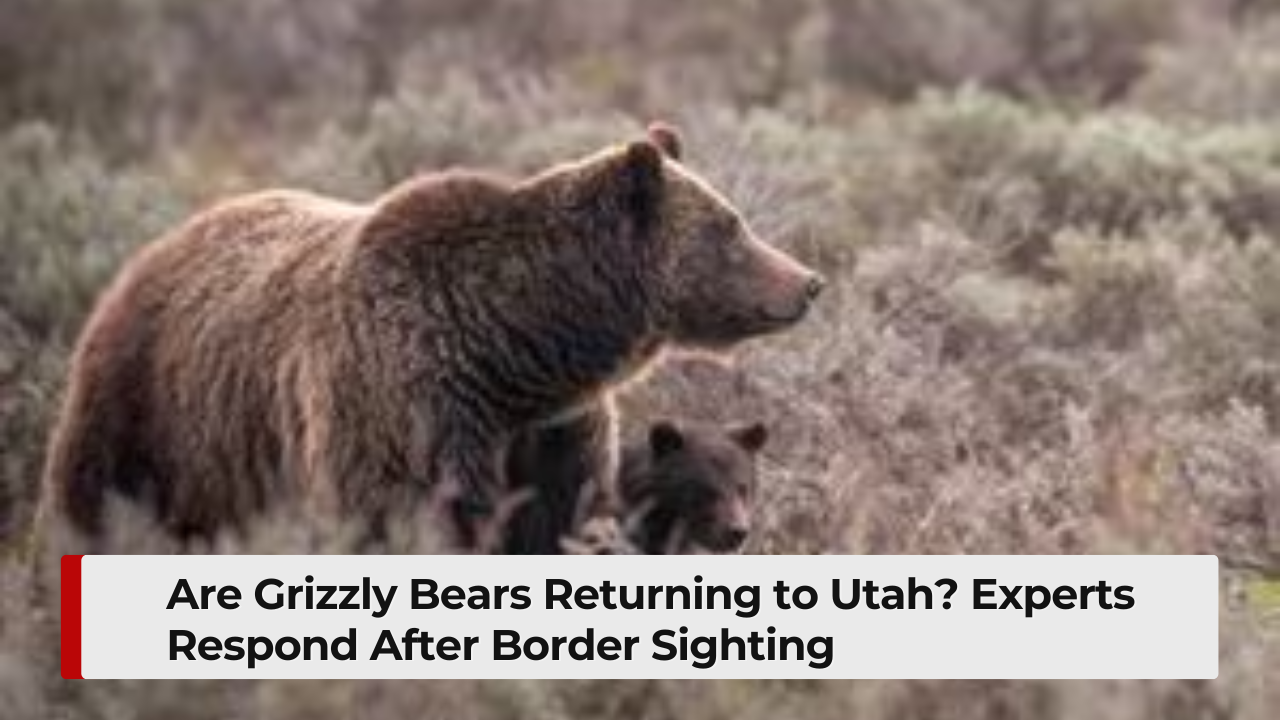For the first time in more than a century, Utah may be seeing the early signs of grizzly bear recolonization. A confirmed grizzly sighting in April 2024, roughly 20 miles east of Utah’s northern border, has sparked renewed public interest — and concern — about whether the long-absent apex predator could be returning to the state.
Wildlife officials say the bear seen near the Wyoming-Utah line was not relocated, leaving open the possibility that it may have already crossed into Utah. As neighboring states experience population growth tied to long-term recovery efforts, experts say it is reasonable to expect more grizzlies wandering near or across Utah’s border. For official information on grizzly recovery status, the U.S. Fish and Wildlife Service remains the primary authority.
Biologists emphasize that this is not a policy recommendation but an opportunity to understand both the challenges and ecological advantages that come with the reappearance of a top predator.
Utah’s Deer and Elk Populations: A Complex Landscape
Utah’s wildlife dynamics vary sharply by region. Harsh winters remain the biggest influence on deer mortality in northern Utah, while years of drought continue to limit habitat quality in the southern part of the state. According to the Utah Division of Wildlife Resources, Utah may have the most robust survival monitoring system in the West, giving biologists a clear picture of how weather, predation and habitat interact.
Elk populations remain relatively stable, partly because the state maintains them at a socially acceptable level to prevent agricultural damage. Deer, however, are not actively capped, making weather and fawn survival much more significant. Predators such as mountain lions, coyotes and black bears take a share of fawns every year, with some units losing as many as 50% of newborns.
Would Grizzlies Harm Deer Populations?
Experts say grizzlies would likely add some fawn mortality but not dramatically. Research from regions like Yellowstone shows that deer and elk make up only about 10% of grizzly diets. Grizzlies can hunt when given the opportunity, but they are primarily omnivores that rely heavily on vegetation, roots, berries and insects.
The concern, specialists say, should not focus solely on predation. Grizzlies alter ecosystems far beyond simply hunting. Their ecological influence is broad, long-lasting and well-documented.
The Ecological Benefits of Grizzlies
Grizzlies offer several ecosystem services that black bears do not. They tend to occupy open terrain, interact with different ecological zones and create a top-down effect across the food chain. Seed dispersal is one of their most overlooked benefits. Biologists compare grizzlies to natural landscapers, constantly spreading seeds across large territories.
They also aerate soil by digging, transport nutrients uphill and distribute micronutrients that benefit ungulates. These contributions — known as “ecosystem engineering” — help maintain healthier forests, meadows and river systems. Even so, experts acknowledge that grizzly return comes with human challenges, including safety concerns, livestock conflicts and economic impacts. For additional scientific context, long-term predator research conducted in Yellowstone National Park provides extensive data on grizzly behavior and ecosystem benefits.
What Utahns Should Expect Going Forward
Officials have not confirmed whether any grizzlies have entered Utah since the April sighting, but as populations expand in surrounding states, future cross-border movement is possible. Wildlife professionals encourage Utahns to stay informed, learn about safe coexistence practices and understand the ecological and social considerations at play.
Experts agree that the conversation is far from one-sided. While there are legitimate concerns about conflicts and management costs, the environmental benefits of apex predators are equally significant. As Utah contemplates the possibility of grizzly return, biologists emphasize the importance of making decisions based on science, not fear.



